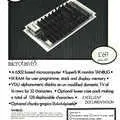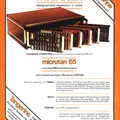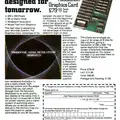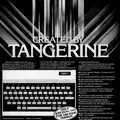Tangerine Advert - March 1981
From Computing Today
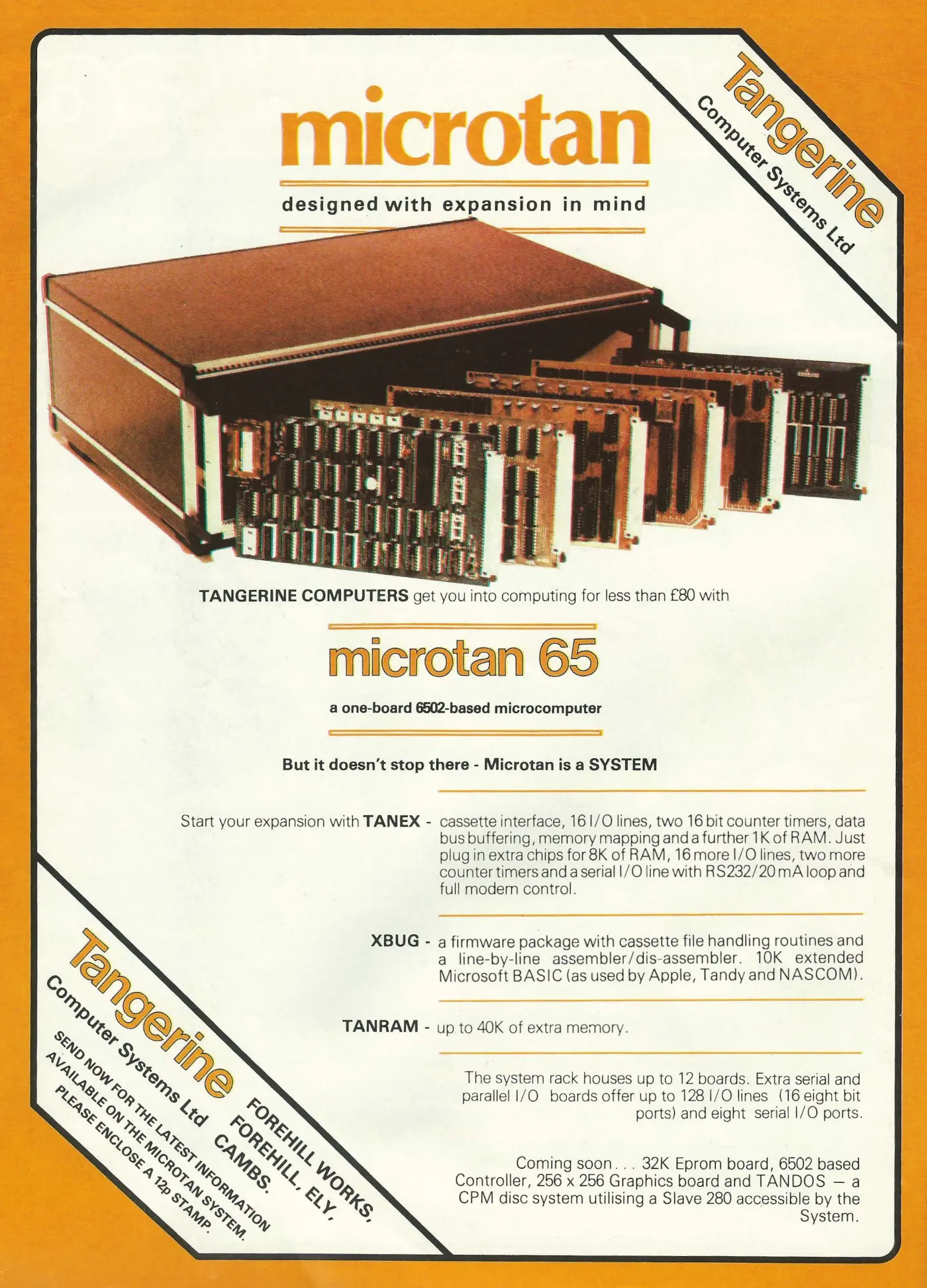
Microtan 65 - Designed With Expansion in Mind
The basis for the Microtan 65 was a 6502-based single-board computer, which as advertised was sold for the bargain price of £80, which is only about £420 in 2025 money.
That's slightly misleading though as the price didn't include the chassis or the case - just the board.
The advert is nicely representative of the "overlap phase" in computing, where kit computers - where everything like video, memory and even a keyboard was an add-on extra - were still being sold, even though more modern fully-built computers had been around for several years - not least the Commodore PET, TRS-80 and Apple II. Even the IBM PC was on the market in the US.
However, there was clearly still a demand for this form factor, and £80 was, regardless of how much soldering had to be done to get it to work, a price only matched by "toy" computers like the Sinclair ZX80.
In the spring of 1982, Tangerine, which had built up something of a cult following, announced plans for its next machine - the Tangerine Tiger, or sometimes Tigress.
With three processors, including a Zilog Z80A CPU, a Motorola 6809 for I/O and a dedicated graphics processor, lots of ports, built-in networking and advanced graphics, including the capability to do polygon shading, Personal Computer World was calling it a "dream machine".
PCW's Peter Rodwell's main wish though was that the Tiger came in a suitably stripey case[1].
Tangerine eventually abandoned the Microtan 65 after about 10,000 systems had been sold.
However in late 1983 it was resurrected by Microtanic Computer Systems, which had acquired all the rights to the system and decided to re-launch it[2].
The updated Microtan board shipped with a similar (and optional) 19" frame and a power supply and came with the option of several peripherals, including a proper keyboard and a disk unit.
It retailed for £59.95 (£260 in 2025 money) for the basic Microtan, with an optional keyboard costing an additional £79.95 (£350) and a colour VDU board adding on an extra £89.95 (£390).
The 3,000-member-strong Tangerine Users Group (TUG) had also been active in the survival of the Microtan 65, in particular through the efforts of the group's Bob Green.
TUG had even been supplying its own hardware items such as the VDU 80/82 80-column video card, nearly a year before Microtanic's updated efforts, as well as its first serious hardware project - the Programmable Graphics Module[3].
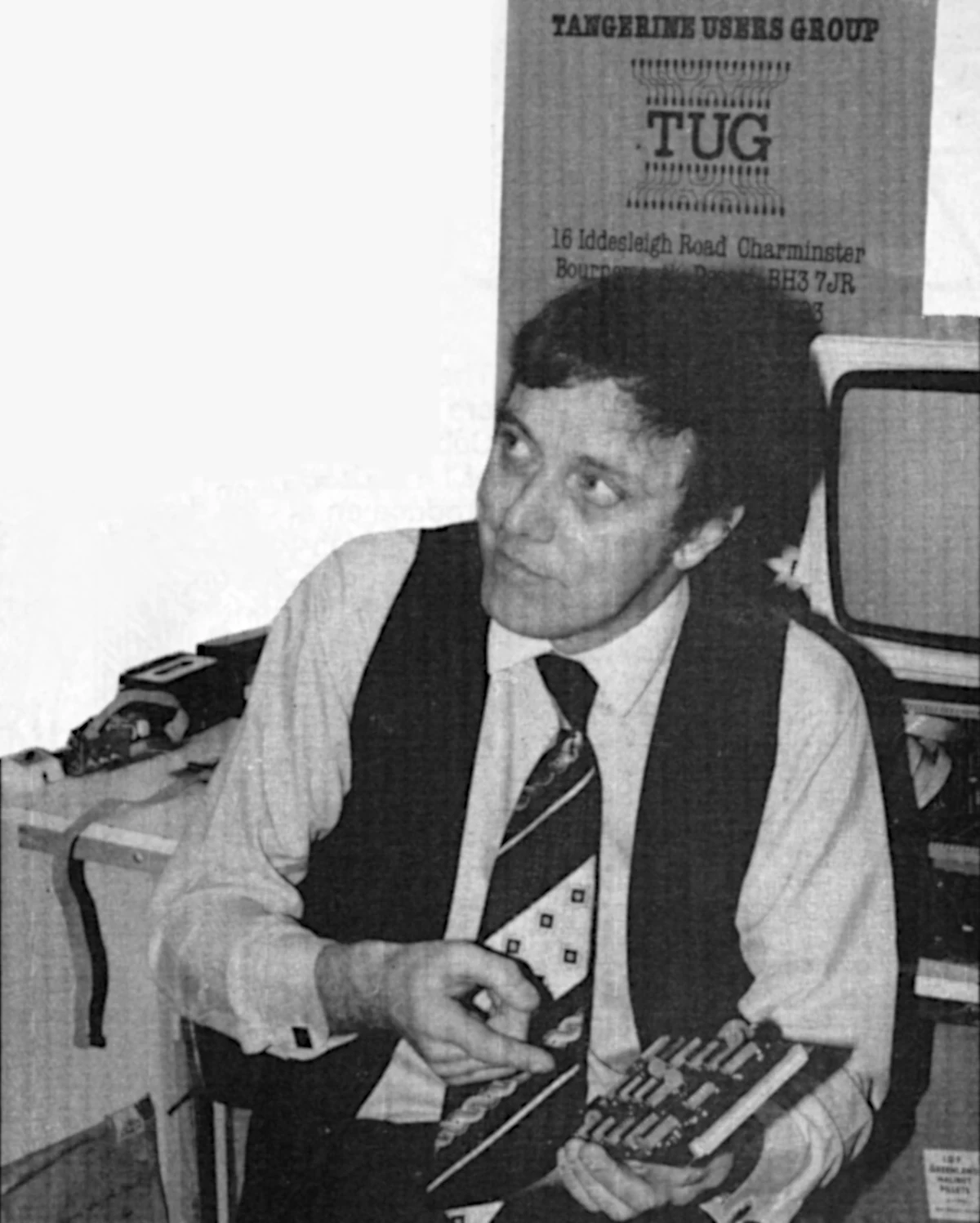
Bob Green, managing director of the Tangerine Users' Group. From Your Computer, February 1982
The group, formed in 1980 and turned into a limited company in October of that year, was based in Charminster near Bournemouth in Dorset. It numbered over 1,000 members by the beginning of 1982.
Relations between TUG and Tangerine were sometimes frosty, as Tangerine - possibly not happy about TUG's branching out into its own hardware - had launched its own rival organisation with its own monthly magazine - the Tansoft Gazette.
Bob Green, TUG's managing director, commented on the state of relations between the two in an interview in February 1982's Your Computer, saying:
"We support the system, not the manufacturers"
TUG also accused Tangerine of failing to meet the users' needs, pointing out for example that after two years on the market, the Microtan still had no floppy disk unit.
Tangerine's Paul Kausman admitted that the company had neglected its first born in favour of the Tantel adapter, but claimed:
"The next product [Tangerine is] releasing is a floppy disk package. It will include a Forth language specially adapted and extended for the Microtan".
TUG on its part was looking for new premises to expand its operations, and already had 21 products waiting to be shipped. Wary of saturating its market, it was releasing them slowly at a "controlled rate"[4].
Tangerine never released the Tiger, although it did get as far as announcing it to the press as the TD-3000 Tigress.
However it had also sold the design to Cambridgeshire-based HH Electronics, which released it in 1983 under the Tiger name. Unfortunately, HH's parent company went bust three months later, with HH itself eventually being sold on to Laney Amplification.
Meanwhile, Tangerine had started work on a smaller microcomputer aimed more at the games and home market and which was designed to take on Sinclair's ZX Spectrum.
Called the Oric-1, Tangerine would create a new company - Oric Products International, set up with funding from British Car Autions[5] - in order to launch it.
Date created: 01 July 2012
Last updated: 25 November 2025
Hint: use left and right cursor keys to navigate between adverts.
Sources
Text and otherwise-uncredited photos © nosher.net 2025. Dollar/GBP conversions, where used, assume $1.50 to £1. "Now" prices are calculated dynamically using average RPI per year.
